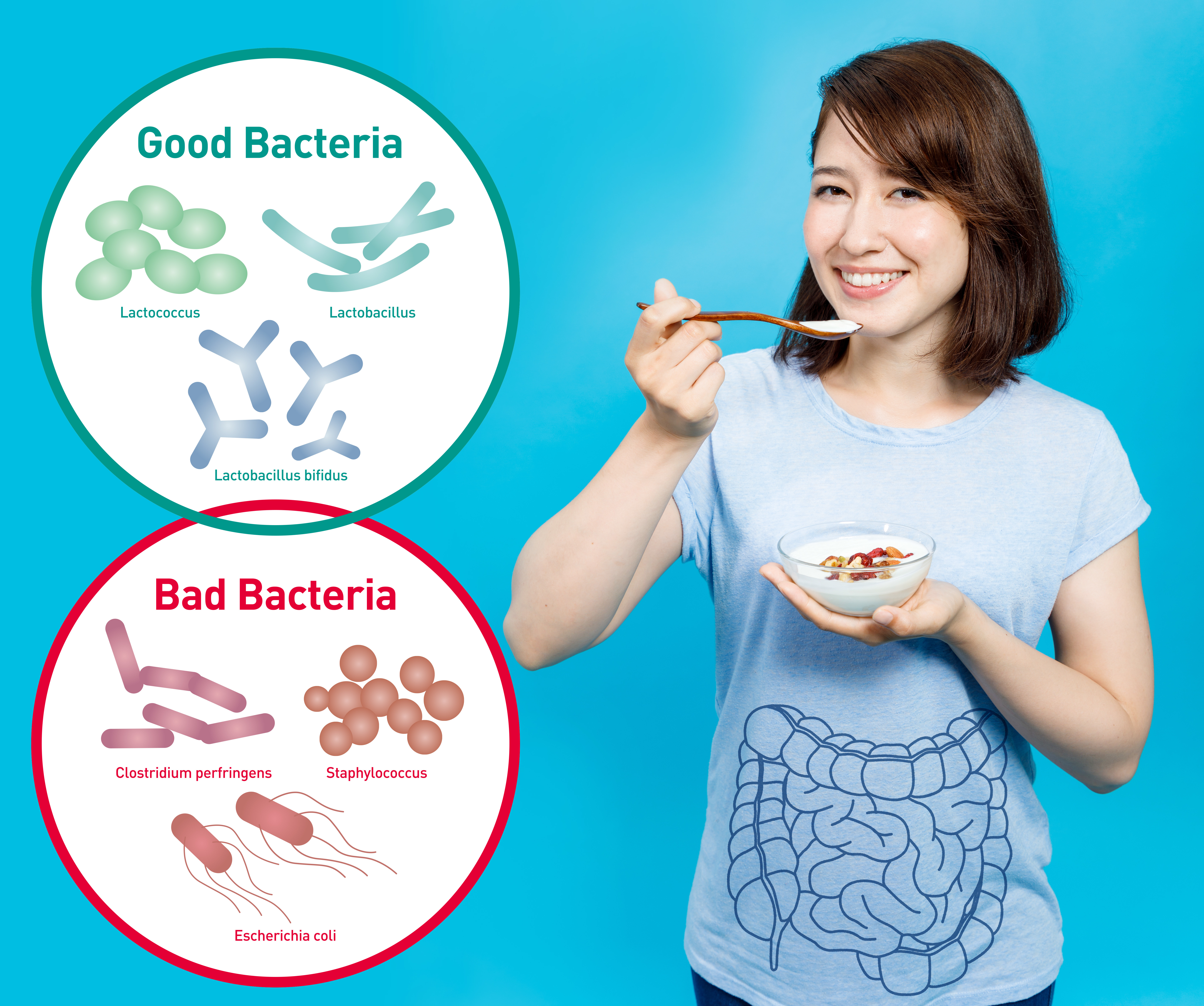One of the main contributing factors that led me to develop IBS was a massive dose of antibiotics to treat the Lyme disease.
It was IV antibiotics, a bag a day for three weeks, after a month long course of pills didn’t work. It was a serious amount, and worked to kill the lyme but it also screwed up my biome. But if I knew then what I knew now I could have probably avoided IBS all together. But that was not my fate.
We now know that antibiotics disrupt the biome by killing all bacteria, not discriminating between the good guys and the bad guys. If you know how to recover then you can help the good guys regrow faster than the bad guys, and avoid digestive and immune problems.
But at the time, I was a busy New Yorker. I didn’t cook, my diet was full of sugar and restaurant food. A bagel and a sugary coffee for breakfast every morning. I was stressed out, I drank and smoked too much, and dealt with health issues with pharmaceuticals. Pretty much the opposite of my life now. I learned the hard way.
With luck, I’ve managed to avoid antibiotics since then, letting my body do the healing work itself. While healing was always slower, I got there in one piece and with no nasty side effects.
Sometimes there’s not an option to avoid antibiotics, when they are either life saving or massively risk reducing.
That’s when know how to recover is key.
My story
I’ve been massively researching this because I may have to take a preventative 4- day course of antibiotics before gum surgery. This is to prevent bacteria from my gum from infecting my heart or other vital organs. It would be a huge risk not to.
I’ve thought deeply about this. There are risks associated with having a life-long gum infection (it’s been linked to developing Alzheimers, which runs in my family). The infection is under my gum and won’t go away on its own without minor surgery.
What I can do is wait until I’ve rid my body of candida and parasites and my biome is in better balance.
Candida is a common side effect of antibiotics use. My candida came from a parasitic infection and lots and lots of stress from moving overseas. I want to clear it up before I do anything that could possibly make it worse.
Candida is a yeast that is supposed to live in your gut. But it can also overgrow if the biome is disrupted (the bad bacteria outnumber the good guys).
Candida can cause lots of IBS-type symptoms such as constipation, bloating, gas, etc. Your beneficial bacteria keeps it in check and from causing these types of symptoms. Because I had enough beneficial bacteria in my gut I had very few candida symptoms.
It is quite tough to kill candida when you biome is out of balance. It will just grow back. The best strategy is to support the growth of a rich and diverse beneficial bacterial colony in your gut. And they will keep the candida in line.
How to regrow the good guys
Below are a few strategies to regrow your beneficial bacteria after antibiotics.
Probiotics
It’s important to take probiotics during and after your course of antibiotics. The rule of thumb is to separate the antibiotics from the probiotics by 2 hours so they don’t cancel each other out.
The best type of probiotic to take is saccharomyces boulardii
It’s a beneficial yeast that supports and regulates the immune system and defends against yeast overgrowth. Typically, 1 or 2 capsules are taken on an empty stomach, an hour and a half away from food or other supplements.
Probiotics can be started a few days before the course of antibiotics begin, but it’s not crucial. What is crucial is to continue taking probiotics daily for about 4 weeks after finishing the antibiotics course. This is an important window for your good bacteria to regrow.
Diet
During this 4 week window, it’s also important to be strict with your diet. No processed foods, gluten, dairy, sugars, excess or refined carbs (pasta, bread), inflammatory oils or alcohol. Avoiding junk food, fast food or anything that can inflames the immune system (foods that cause sensitivities or allergies), is key. A diet that is high in the foods above could lead to leaky gut or candida.
Ideally, your diet should be as diverse as possible, featuring lots of plant fiber, which beneficial bacteria feed on. Focus on roots and tubers like sweet potatoes, jicama, parsnips, carrots, turnips, cooked and cooled white potatoes (resistant starch), rutabaga and squash. The last six veggies are safe for Low FODMAP/SIBO.
For those who can tolerate it, beans and legumes are amazing biome food. The easiest types of beans to digest are chick peas, green lentils and white beans. The hardest ones are kidney beans. Black beans are moderately hard. Soaking beans for a few hours and cooking them extremely well in a slow cooker or pressure cooker can help with digestion. So can taking an enzyme like Beano.
If you don’t do well with beans, don’t force it, avoiding them is totally fine, as we are trying to avoid reactions.
For those who don’t suffer from SIBO or follow the Low FODMAP diet, stewed apples are an amazing gut-repairing food. When you cook apples they release pectin, which heals the mucosal layer of the gut lining.
Fermented foods
If you’re taking the right probiotics it is not crucial to eat fermented foods like sauerkraut, kim chee, yogurt, kefir, miso or kombucha. But it will support your effort to repopulate your good bacteria. It’s like extra credit.
While yogurt, sauerkraut and kefir are great options, be cautious with kombucha as it may promote the growth of yeast.
Testing
It’s a great idea to test your biome at the 4-week mark of rebuilding to see how well you’ve done and what particular strains need more support.
The GI Map is a stool test that provides comprehensive info on the status of beneficial versus pathogenic bacteria in the gut, as well as immune and digestive function.
The test results will provide specific information about what type of probiotics or foods are needed to regrow lacking strains.
If bifido or lactobacillus strains are lower than ideal, I like Therbiotic complete by Klaire Labs to support the regrowth of these important strains.
The Viome test is also great test to measure your biome. It will not only provide data on what’s lacking, but also a comprehensive food list targeted at regrowing lacking strains.
Akkermansia, for example, is an important bacterial strain for the health of the gut’s mucosal lining. It is a great internal protection against leaky gut and is involved in healthy weight maintenance (obesity prevention). This species thrives on red foods such as cranberries, raspberries, pomegranates, radishes, red grapes and red apples.
If testing shows an overgrowth of species like clostridium, it can be remedied by eating lactofermented foods like sauerkraut or pickles fermented in salt (no vinegar). Saccharomyces Boulardii also helps control this overgrowth.
What to do if you can’t retest
For those who can’t do testing, taking a general broad spectrum approach with a variety of probiotics can cover all the bases.
The three types of probiotics to focus on are the two mentioned above, and a soil-based probiotic called Megasporbiotic.
Megasporbiotic is available at the following online supplement dispensary. I use this dispensary to make sure clients get quality supplements direct from the manufacturer, and avoid supplement fraud (buying fake supplements online). Megasporbiotic is not available on Amazon or many other websites.
To access the dispensary create a user name and password then type Megasporbiotic in the search bar.
Megasporbiotic offers soil based probiotics you can’t get through fermented foods or lactobacillus based probiotics. Soil-based probiotics were an important part of our biome and immune system back when we worked closer with the soil and spent more time working outside. As modern life is spent mostly indoors we need to supplement this part of our biome.
Because the are soil based, the probiotics in Megasporbiotic are hearty, don’t need to be refrigerated and can survive heat and cold.
It helps tame inflammation, encourages bowel movements when constipation is present and is great for people with SIBO, as it does not cause the reactions that lactobacillus-based probiotics do.
Megasporbiotic has powerful an antimicrobial properties and will kill pathogenic bacteria encountered in the gut.
The die off effects can be mitigated by opening a capsule and starting with 1/4 to 1/2 capsule a day. The powder is tasteless and can be put directly on the tongue. It may take time to build up the to full dose of two a day, taken with food but away from other probiotics (it will kill them).
It’s a good idea to space out different strains of probiotics throughout the day (morning, afternoon and evening). If taken together they will compete for resources in the gut, which can diminish efficacy.
Additional herbal support
Sealing the gut lining
Bacteria live on the mucosal layer of the gut lining. So additional herbal support for healing and sealing the gut lining can help create a welcome home for beneficial bacterial colonies.
Soothing herbs like l-glutamime, vitamin A, quercitin, zinc carnosine, slippery elm and marshmallow help seal and support a health mucosal lining. GI Revive contains all those herbs in one capsule.
People from SIBO should avoid the last two herbs mentioned as they can are high in FODMAPs.
Prebiotic fibers
Prebiotics are just as important as probiotics, because they feed probiotics and beneficial bacteria. My favorite source of prebiotic fiber is Paleo Fiber. I put a tablespoon in my smoothies or mix into yogurt daily.
Prebiotics and most types of probiotics can bother some people with SIBO. The only safe probiotic for SIBO is Megasporbiotic.
Intermittent fasting
Intermittent fasting is great for increasing biome richness and diversity.
Fasting has been shown in studies to increase colonies of beneficial bacteria. What I love about intermittent fast is that you don’t have to go hungry. It works by creating an eating window and a fasting window.
For example, eat from 9am to 5pm for an 8-hour window and refrain from eating from 5pm to 9 am the next morning. This gives your body time to digest and turn its energy to self cleaning and repair. This can help reduce inflammation. You get the benefits of fasting while still eating and enjoying food daily.
Fasting is not recommended for people who are underweight or suffer from nutritional deficiencies. Anyone with a gut infection like SIBO, candida or parasites may suffer from nutritional deficiencies, even with a healthy diet, as the pathogens consume nutrients before they are absorbed into the small intestine.
Resistant starch
Resistant starch helps feed beneficial bacteria in the large intestine. These bacteria produce butyrate, a short chain fatty acid that tames inflammation in the large intestine.
Resistant starch comes from cooked and cooled white rice and potatoes. Cassava/yuca, green bananas, green plantains, tiger nuts and raw potato starch. Green plantain chips are a great source of resistant starch.
Homemade bone broth, gelatin and collagen
Bone broth, gelatin and collagen are all wonder foods for supporting the immune system, taming inflammation and healing and sealing the gut lining. If you can’t make your own homemade bone broth then add gelatin or collagen to your smoothies, dessert, tea or coffee. It provides essential amino acids, extra protein or gut sealing support.
I’m work on a treat recipe cook book that uses bone broth, collagen and gelatin in many fun and interesting ways. All the treats are perfect for the biome rebuilding stage. Stay tuned for news on that.
Spending time outside
Spending time outside, in nature is good for the biome, the mind and the soul. Activities like hiking, gardening, and swimming in the ocean expose your body to lots of beneficial microbes.
The relaxation that being outside and breathing fresh air promotes is also great for the biome.
I hope that these tips were useful. Next time you have to take antibiotics, don’t worry just use some of the biome rebuilding strategies above.


